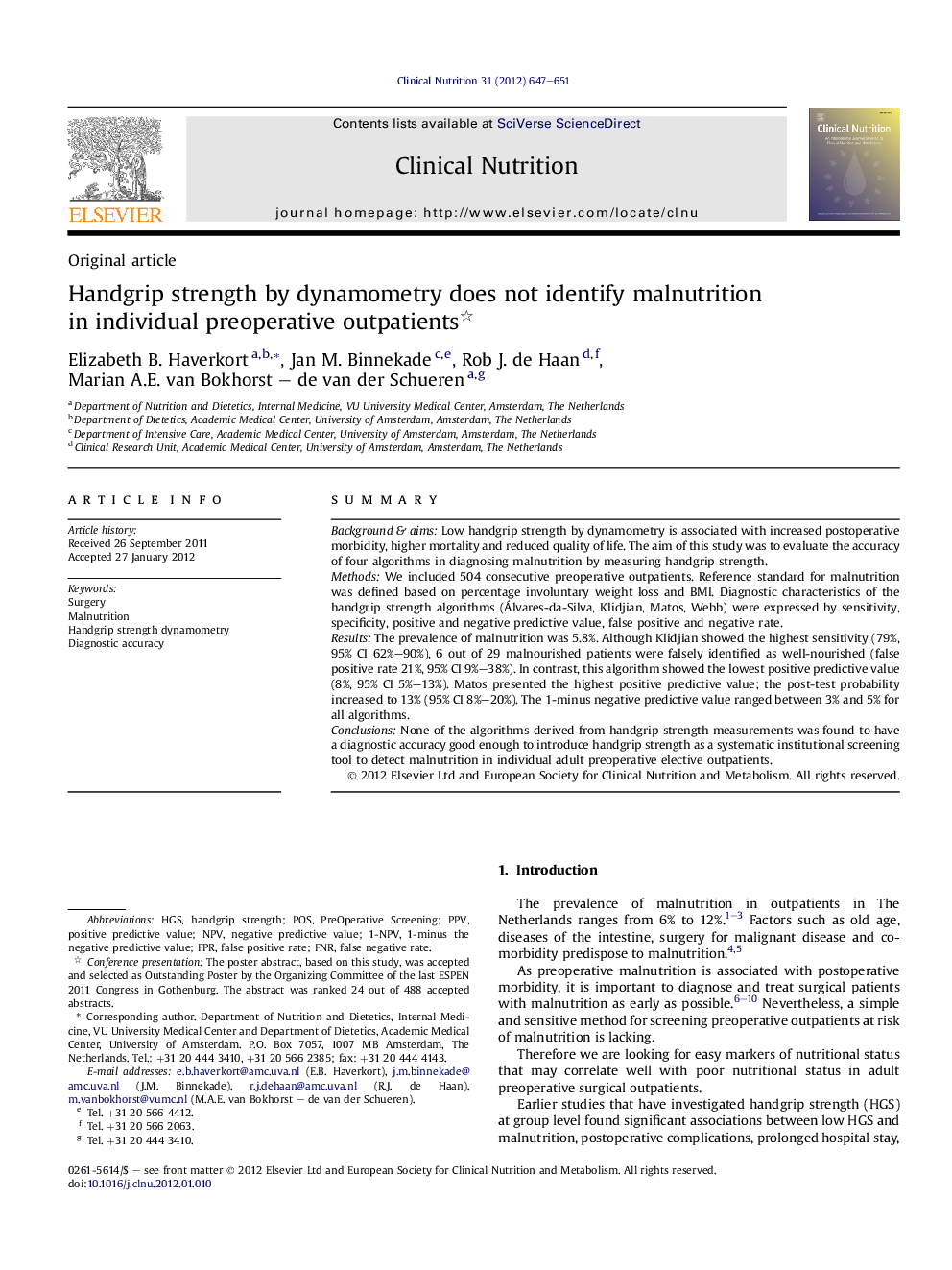| Article ID | Journal | Published Year | Pages | File Type |
|---|---|---|---|---|
| 2687134 | Clinical Nutrition | 2012 | 5 Pages |
SummaryBackground & aimsLow handgrip strength by dynamometry is associated with increased postoperative morbidity, higher mortality and reduced quality of life. The aim of this study was to evaluate the accuracy of four algorithms in diagnosing malnutrition by measuring handgrip strength.MethodsWe included 504 consecutive preoperative outpatients. Reference standard for malnutrition was defined based on percentage involuntary weight loss and BMI. Diagnostic characteristics of the handgrip strength algorithms (Álvares-da-Silva, Klidjian, Matos, Webb) were expressed by sensitivity, specificity, positive and negative predictive value, false positive and negative rate.ResultsThe prevalence of malnutrition was 5.8%. Although Klidjian showed the highest sensitivity (79%, 95% CI 62%–90%), 6 out of 29 malnourished patients were falsely identified as well-nourished (false positive rate 21%, 95% CI 9%–38%). In contrast, this algorithm showed the lowest positive predictive value (8%, 95% CI 5%–13%). Matos presented the highest positive predictive value; the post-test probability increased to 13% (95% CI 8%–20%). The 1-minus negative predictive value ranged between 3% and 5% for all algorithms.ConclusionsNone of the algorithms derived from handgrip strength measurements was found to have a diagnostic accuracy good enough to introduce handgrip strength as a systematic institutional screening tool to detect malnutrition in individual adult preoperative elective outpatients.
